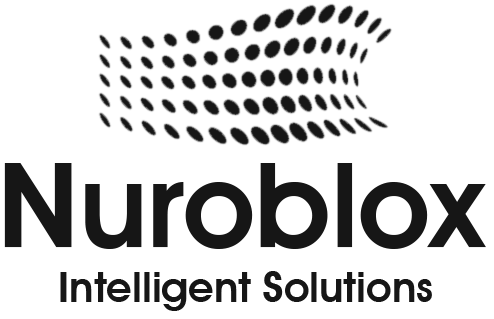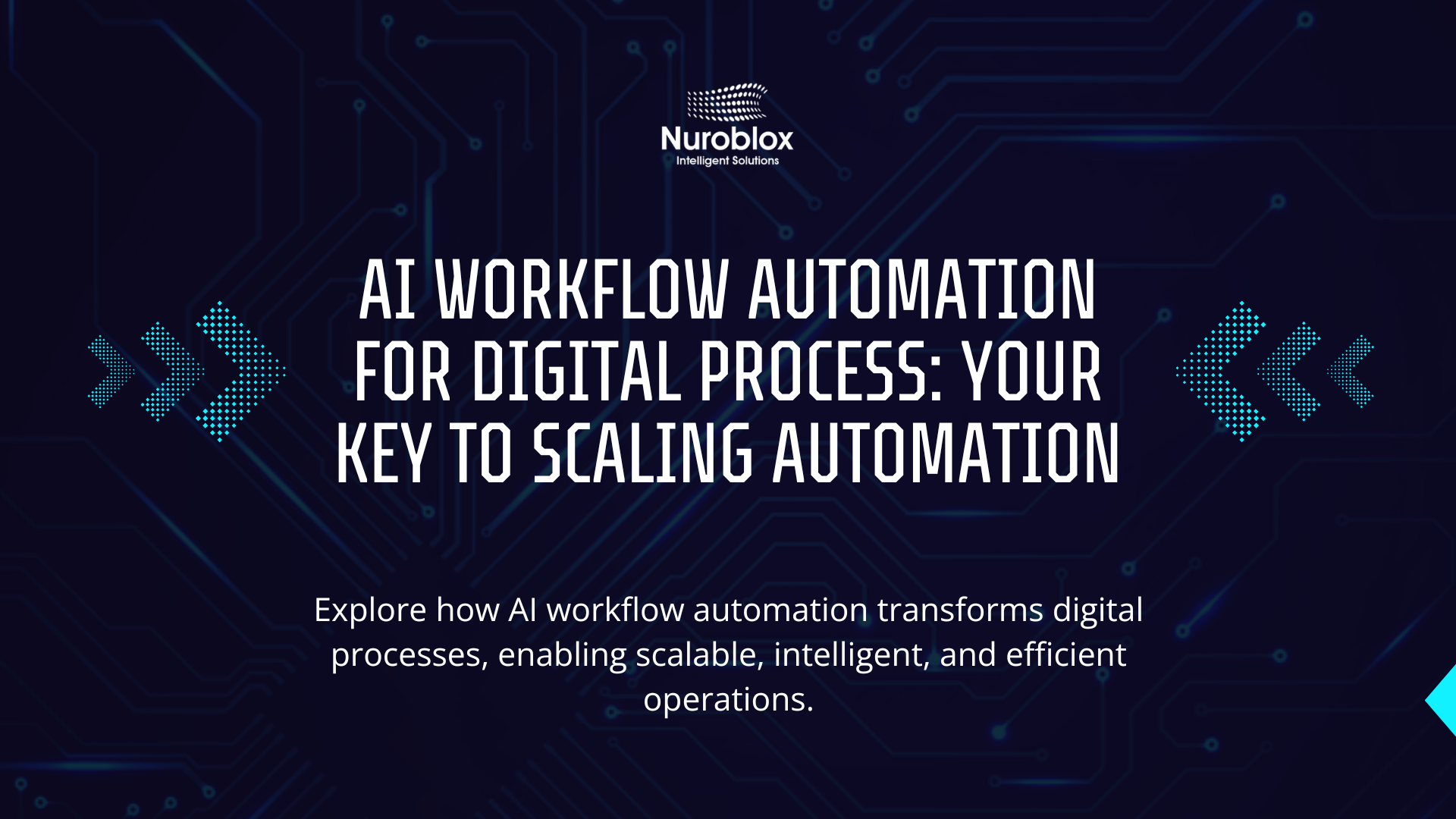AI Workflow Automation For Digital Process: Your Key to Scaling Automation
In today’s competitive landscape, enterprises are in a constant race to become more efficient, agile, and resilient. Digital Process Automation (DPA) has been a significant step forward, promising to streamline operations and reduce manual effort. However, many organizations find themselves hitting a “scaling wall.” While DPA excels at optimizing structured, repeatable processes, it often falls short when faced with the complexity, variability, and sheer volume of modern enterprise operations. According to McKinsey, up to 70% of employee time is still consumed by routine work that is ripe for a more intelligent form of automation.
This is where AI Workflow Automation emerges not just as an incremental improvement, but as a transformative force. By infusing the process-centric approach of DPA with the cognitive power of Artificial Intelligence (AI), businesses can finally break through the barriers of scale. This isn’t about automating more tasks; it’s about creating intelligent, self-optimizing, and adaptive systems that can handle the dynamic nature of real-world business. The global workflow automation market is set to reach $23.77 billion in 2025, and AI is the engine driving this expansion. This article explores why AI is the indispensable key to unlocking the full potential of DPA at an enterprise scale.
The Scaling Challenge – Why Traditional DPA Hits a Wall
Digital Process Automation represents a major evolution from task-focused tools like Robotic Process Automation (RPA). Instead of just automating a single action, DPA aims to digitize and automate entire end-to-end business processes, from customer onboarding to supply chain management. Its goal is to create more efficient and agile operations by redesigning workflows.
However, as organizations attempt to scale these initiatives, they encounter fundamental limitations –
- Inability to Handle Unstructured Data – Traditional DPA and RPA systems are rule-based and thrive on structured data. They falter when faced with unstructured inputs like emails, contracts, customer feedback, or images, which make up a vast portion of enterprise data.
- Rigidity in Dynamic Environments – Business processes are not static. They must adapt to market shifts, new regulations, and changing customer expectations. Rule-based DPA struggles with this variance, requiring constant manual reprogramming to handle exceptions, which undermines the goal of automation.
- Fragmented Automation Islands – Without an intelligent orchestration layer, automation efforts often become siloed within departments. While the finance team might automate invoicing and HR automates onboarding, these systems rarely communicate, preventing true end-to-end enterprise automation.
- Limited Decision-Making Power – DPA can follow a predefined path, but it cannot make judgments, interpret context, or learn from outcomes. This keeps complex, decision-heavy processes reliant on human intervention, creating bottlenecks and limiting the scope of automation.
AI Workflow Automation – The Intelligence Layer for True Scale
AI Workflow Automation addresses the core weaknesses of traditional DPA by integrating a layer of cognitive intelligence. It combines process automation platforms with AI technologies like Machine Learning (ML), Natural Language Processing (NLP), and computer vision to create systems that don’t just execute tasks but also learn, reason, and adapt.
From Following Rules to Making Intelligent Decisions
The most significant shift is from rule-based execution to data-driven decision-making. AI elevates DPA from a system that follows instructions to one that intelligently manages workflows.
- Machine Learning (ML) algorithms analyze historical data to identify patterns, predict outcomes, and dynamically optimize processes. For instance, in manufacturing, this enables predictive maintenance by forecasting equipment failures before they occur. In finance, it powers fraud detection systems that adapt to new threats in real-time.
- Generative AI can automate complex decision-making and even help build automation workflows faster, transforming the speed and scope of implementation.
Conquering the Challenge of Unstructured Data
AI, particularly Natural Language Processing (NLP), gives machines the ability to understand and process human language. This unlocks automation for a vast range of processes that were previously off-limits. With NLP, an AI-powered workflow can –
- Read, classify, and route incoming customer emails to the correct department.
- Extract key information from invoices, contracts, and legal documents automatically.
- Analyze customer feedback from support tickets and social media to identify sentiment and emerging issues.
Achieving Dynamic Adaptation and Optimization
Unlike the static nature of traditional DPA, AI-powered workflows are designed to evolve. By continuously analyzing performance data, machine learning models can identify bottlenecks and inefficiencies, then proactively suggest or implement optimizations. This creates a system of hyperautomation, where the business process itself becomes intelligent and self-improving, a strategy Gartner predicts will directly impact one-fifth of all business processes by 2025.

Integrating AI into process automation isn’t just a theoretical upgrade; it delivers measurable and profound business results. It moves organizations from incremental efficiency gains to transformative improvements in productivity, cost savings, and strategic capacity.
Unleashing Unprecedented Efficiency and Productivity
By tackling complex and variable tasks, AI workflow automation eliminates entire categories of manual work. One real-world use case demonstrated the elimination of over 500 manual tasks weekly. This frees up employees from repetitive, low-value activities to focus on innovation, strategy, and customer-facing roles. Studies show that the impact on labor productivity can be immense, with increases of up to 40%. This translates directly to the bottom line, with research from IDC finding that automation helps organizations save an average of 13.5% on operational costs. Furthermore, some businesses have seen a return on investment (ROI) for RPA initiatives ranging from 30% to 200% within the first year.
Enabling True End-to-End Enterprise Automation
AI acts as the orchestration layer that connects disparate systems and processes across an enterprise. It breaks down the departmental “automation islands” by enabling workflows that span finance, HR, marketing, and operations. This holistic approach, often called intelligent automation or hyperautomation, is about automating everything that can and should be automated. It ensures seamless data flow and process continuity, allowing a customer order to trigger actions across inventory, billing, and shipping systems without human intervention.
Enhancing Accuracy, Compliance, and Experience
Automating data handling and decision-making processes significantly reduces the potential for human error, which enhances data accuracy and strengthens compliance. For highly regulated industries like finance and healthcare, this is critical. A wealth management firm that automated its case management workflows with AI-driven analytics reduced customer onboarding time from weeks to just 24 minutes while ensuring complete data accuracy. This speed and reliability also lead to a dramatically improved customer experience, with faster response times and more personalized service.
A Strategic Roadmap for Implementing AI Workflow Automation
Transitioning to an intelligent automation model requires more than just technology; it demands a strategic vision and a structured approach.
- Establish a Clear Vision – Begin with a comprehensive AI strategy that is tightly aligned with core business objectives. Define what success looks like and communicate the value proposition across the entire organization to get stakeholder buy-in.
- Prioritize the Data Foundation – The effectiveness of any AI system is contingent on the quality of the data it’s trained on. Before deploying AI workflows, invest in data quality, governance, and integration. A robust data foundation is non-negotiable.
- Adopt a Phased Implementation – Don’t try to boil the ocean. Start with high-impact, low complexity use cases to build momentum, demonstrate value, and develop internal expertise. These “quick wins” pave the way for more ambitious, transformational initiatives.
- Build a Strong Governance Framework – As you scale, centralized oversight is critical. Establish a Center of Excellence (CoE) to set standards, manage the automation pipeline, ensure security, and promote best practices across the organization.
- Invest in People and Change Management – Automation is a tool for empowerment, not replacement. Invest in upskilling and reskilling programs to prepare employees to work alongside their new “digital coworkers.” Proactively address concerns and frame the transition as an opportunity for professional growth.
The era of simple, rule-based automation is yielding to a more powerful paradigm. While traditional DPA provided the foundation, its limitations have become a barrier to the profound transformation that intelligent automation promises. The fusion of AI with workflow automation is the engine that will drive the next wave of enterprise productivity and innovation.
The question for leaders is no longer if they should integrate AI into their automation strategy, but how quickly they can architect an intelligent, scalable framework to stay competitive. Which of your core business processes are currently stalled by complexity and variability, and how could AI-driven workflows unlock their full potential?


